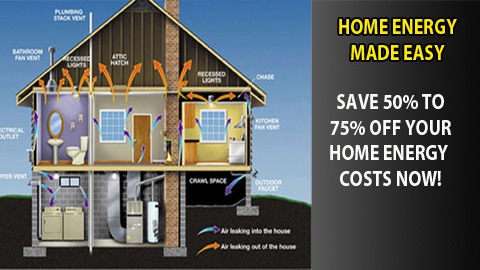The Benefits of an Hydroponic System
The process of growing plants solely using water, nutrients, and a growing media is known as hydroponics. The term "hydroponics," which refers to a gardening technique that uses no soil, is derived from the Greek words "hydro," which means water, and "ponos," which means work.
Hydroponic gardeners employ a variety of growing media, such as coconut coir, vermiculite, perlite, and more, in place of soil.
In essence, the goal of a hydroponic system is to minimize obstacles between a plant's roots and the water, oxygen, and nutrients that are required for growth (and thrive). This may be accomplished in a variety of methods.
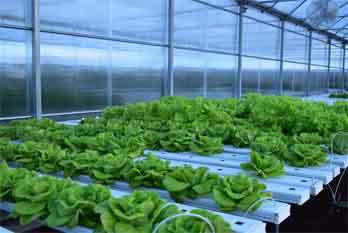
7 Facts about hydroponic herb gardens
Indoor Hydroponic Garden
One of the best methods for growing seasonal, fresh veggies is by having an indoor hydroponic garden. It is a fantastic option for cultivating a wide range of plants in constrained areas such as indoors. When plants are grown hydroponically, their roots are not obliged to look for the nutrients they need to survive. Instead, they receive all the nutrients required for rapid, powerful growth directly. As a result, plant growth is more prolific and root systems are smaller.
There are many advantages to hydroponic gardening indoors. For example, all of the necessary factors influencing proper plant growth can be readily regulated and maintained. This includes factors such as light, temperature, humidity, pH levels, nutrients, and water. The ability to control these elements makes hydroponic gardening easier and less time consuming than gardening with soil.
- Wick System Hydroponics: These are the easiest and simplest form of hydroponic plants in the world of hydroponics. This system is based on four components which can help you to use household items for building a functioning system readily. It is the best system for those who like to up-cycle and reuse things. This system is gaining popularity because you can choose from a number of materials to use in your hydroponic garden.
- Drip System Hydroponics: This irrigation technique is the most water-efficient than traditional methods. Moreover, it adopts a plant growing system that needs the least amount of soil and is used to produce various types of herbs efficiently and easily by the people living in small apartments in the cities.
- Ebb And Flow Hydroponics: The hydroponic plants of this type are also known as aquaponics or drain and flood hydroponics as they use biomaterials like fish waste nitrates as a medium to grow fast. But this variety is not for those who are not ready to use live fish in their garden.
- Deep Water Culture Hydroponics: In this method of growing hydroponic plants, the plants are grown in a solution of nutrients and oxygenated water with their roots suspended instead of soil. Many drawbacks of the plants grown in soil are eliminated in this method. It offers larger crop yields as these plants grow at a faster speed.
- Nutrient Film Technique or NFT hydroponics: It is the latest form of growing hydroponic plants as these plants are fed by a constantly flowing stream of liquid and their roots hang into the stream like dipping their toes gently in the stream of water. This technique of growing plants uses materials not used by the ancestors of the farmers.
- Aeroponics: In this system of growing plants, the plants have their roots suspended in the air and they get nutrition from the solutions based on water sprayed or finely misted on their roots.
So you can choose the method of growing hydroponic plants as per your liking as well as suitability.
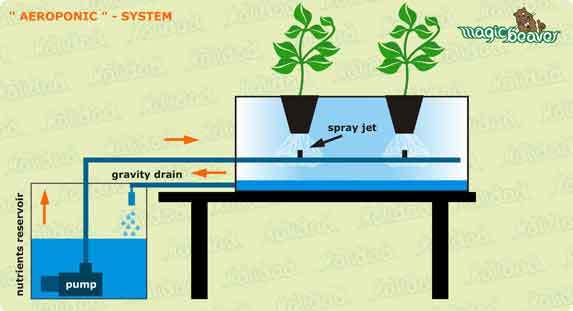
Benefits of a Hydroponic Grow System
Farmers are able to grow crops more successfully and efficiently because of the hydroponic grow system. To ensure that plants receive the precise nutrition they require, they can control pH and nutrients. Water that plants do not use is recycled through closed systems.
Growers can regulate temperatures and lighting cycles to increase plant productivity by growing indoors. Systems can be developed to increase planting density and make better use of vertical space. We can also build farms using hydroponics in places where the soil is unsuitable for farming or there isn't enough room to build one.
Compared to traditional farming methods, hydroponics offers the following benefits:
Hydroponics is 90% more efficient in water utilization.
For the same amount of space, hydroponic production is 3 to 10 times higher.
A well-managed hydroponic grow system can raise crops twice as fast as traditional methods.
The lesser time between harvest and consumption enhances the crops’ nutritional value.
Farming is possible in areas with unfavorable weather and soil conditions for conventional food production, thanks to indoor farming in a climate-controlled setting.
When using a hydroponic system, chemical weed and pest control products are not required.
DIY Hydroponic System
A hydroponic garden is ideal if you want to grow your own food but lack the space or dirt to do so. This gardening technique was first used more than 2,000 years ago. However, since it enables gardening in highly urbanized areas, it has undergone innovation and and progress.
There’s a variety of DIY hydroponic system options, from the straightforward wick and water culture systems to the more ambitious NFT (Nutrient Film Technology) and drip hydroponic systems, depending on your demands and available space.
Being familiar with water pumps (from aquariums or garden ponds) and tubing is advantageous because most hydroponic gardens use electrically recirculated water. You can also buy a complete hydroponic kit that includes everything you will need to start your own hydroponic garden.
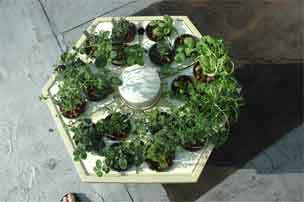
Faster growth of plants
Al the elements minimum required for the growth of plants can be delivered to the plants grown in a hydroponic system. The plants grown in soil have to depend on nutrients and water for their growth whereas hydroponic plants have to depend only on nutrients they get through different methods to optimize their growth.
They need not search for water and essential nutrients for their proper growth. This is one reason for which hydroponic plants grow up to 50% faster than soil plants.
Hydroponic Set Up
Following are some of the hydroponic set up options you can build, depending on your available space and needs:
Wick Hydroponic System
A wick hydroponic system surrounds the plant roots with absorbent substances like perlite or vermiculite. The wicks made of nylon aid in bringing the nutrient-rich water to the plants.
The wick system is often the ideal choice for those looking for the simplest and least expensive entrance point into hydroponic farming. The construction is easy and the materials are cheap. It's also an excellent hydroponic system for DIYers who don't like working with electronics and pumps.
Smaller plants like herbs do best in wick-style hydroponic systems as opposed to larger plants like tomatoes or peppers, which frequently need more nutrients than the wicks can provide.
Water Culture Hydroponic System
If the wick-style hydroponic set up is fundamental, water culture systems, also known as the lettuce raft method, are even more fundamental. Hydroponic systems that use water culture eliminate any obstacles between the plants and the water's nutrient content. One typical water culture hydroponic garden type that already happens in nature is the growing of water lilies.
The plant roots are enclosed in net pots. But that only serves to keep the plants from getting lost. If not, water is in direct touch with the plants.
Ebb & Flow Hydroponic System
A hydroponic system's ebb and flow design depends on thoughtfully flooding and draining the perlite-based growing medium. To avoid wash-out, the water in its flooded state always rests an inch or two below the surface of the growing media.
Hydroponic systems that use ebb and flow are often larger than other systems to allow for the creation of a small flood plain. The benefit is that this kind of system allows for the growth of larger plants, including root vegetables like carrots.
Drip Hydroponic System
The system drips water onto the root systems of the plants through a network of thin hoses. This is an extremely reliable type of hydroponic system. An electric pump transports the nutrient-rich water through tubes to the growing medium's top surface. Following a steady drip along the roots, the water eventually drains to the container's base.
Recirculating or non-recirculating drip systems are both possible. Unused, nutrient-rich water is returned to the growing surface using recirculating systems. Systems without recirculation release any unused water.
Nutrient Film Technology (NFT)
NFT hydroponic systems may sound complicated, but they are actually rather straightforward. The thin layer of water flows through and around a plant's root system when water flows down a developing channel. A pumping system collects water from the bottom and cycles it back up to the top.
The growth channels are not used by the plants for rest. Instead, they hang above the channels, their roots dangling in the water. Rain gutters are frequently used by NFT system builders to create pre-built channels. Many different sorts of plants can be cultivated this way because of the size and shape of the gutters.
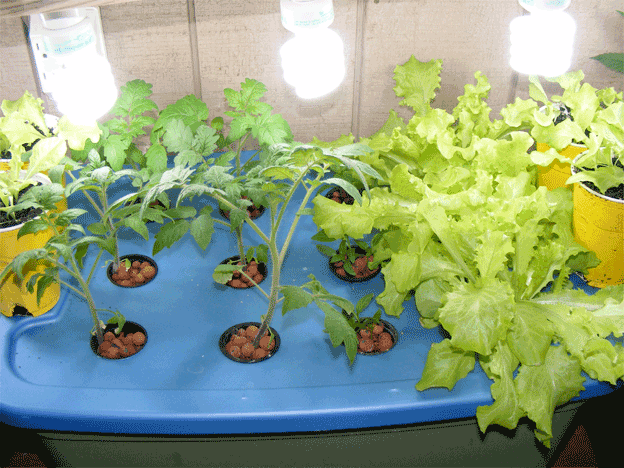
No weeding required
You need not worry about weeding your plants when they are not grown in soil. You need not look at your hydroponic herb garden, again and again, to find the growth of weeds in it as done by traditional gardeners and farmers. So, you have to work less for ensuring the growth of your plants in your hydroponic garden due to the absence of any weeds.
Complete control over the growth of your plants
The entire environment of your hydroponic herbal garden remains under your control as you can control the supply of nutrients, water, oxygen, temperature, light, and humidity required by them for their proper growth.
You can adjust their supply as per the requirement of your plants which increases the degree of your control on them. Moreover, you need not follow a strict program to grow a few herbs in your garden as compared to traditional farmers who have to increase the supply of everything to improve the growth of their plants.
Conclusion
Thus, by knowing a few facts about hydroponic gardening you can easily decide about developing a hydroponic herb garden in your apartment.

Solar Hot Water Collector: The Best Guide to Building and Installing a Solar Hot Water System
Hello there, fellow solar enthusiasts! It’s great to be talking with you

Hybrid Solar Wind Power Generation System: Best Comprehensive Guide to Building Your Own Renewable Energy Solution
Hello there! If you are looking for an alternative energy source that

Solar Heating System: Best Comprehensive Guide to Building and Installing a Solar Heating System
As a solar heating system expert, I have seen firsthand how this

Solar Cooling: How to Keep Your Home Cool with Solar Energy?
Hey there, folks! As a solar cooling consultant with years of experience

Stand Alone Solar Power System: How to Build an Off-Grid Solar Power System for Your Home?
As the demand for sustainable energy solutions increases, stand alone solar power

Solar Heating Systems: The Different Types and Benefits Of Solar Heating Systems
As a solar heating systems expert, I know that these innovative technologies


